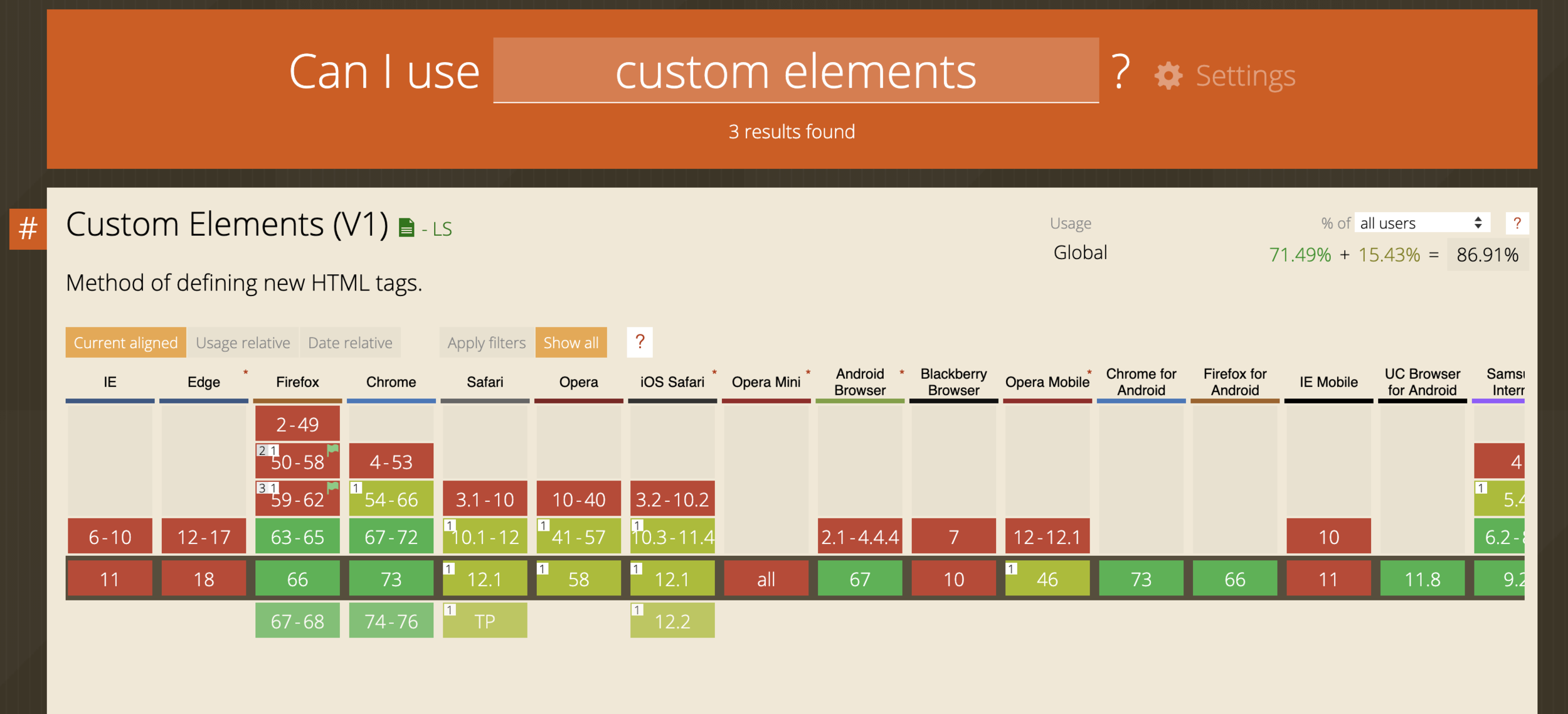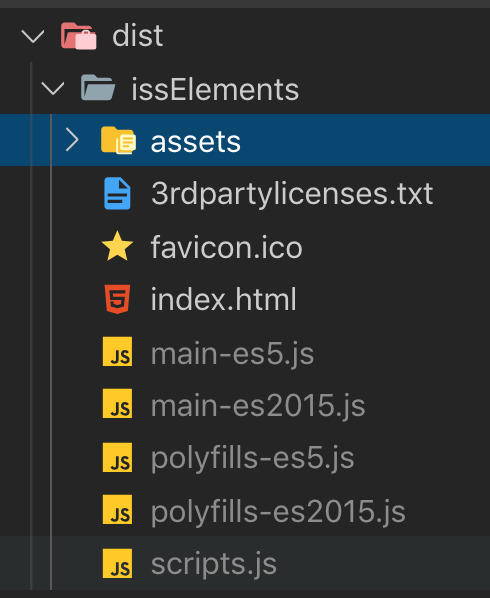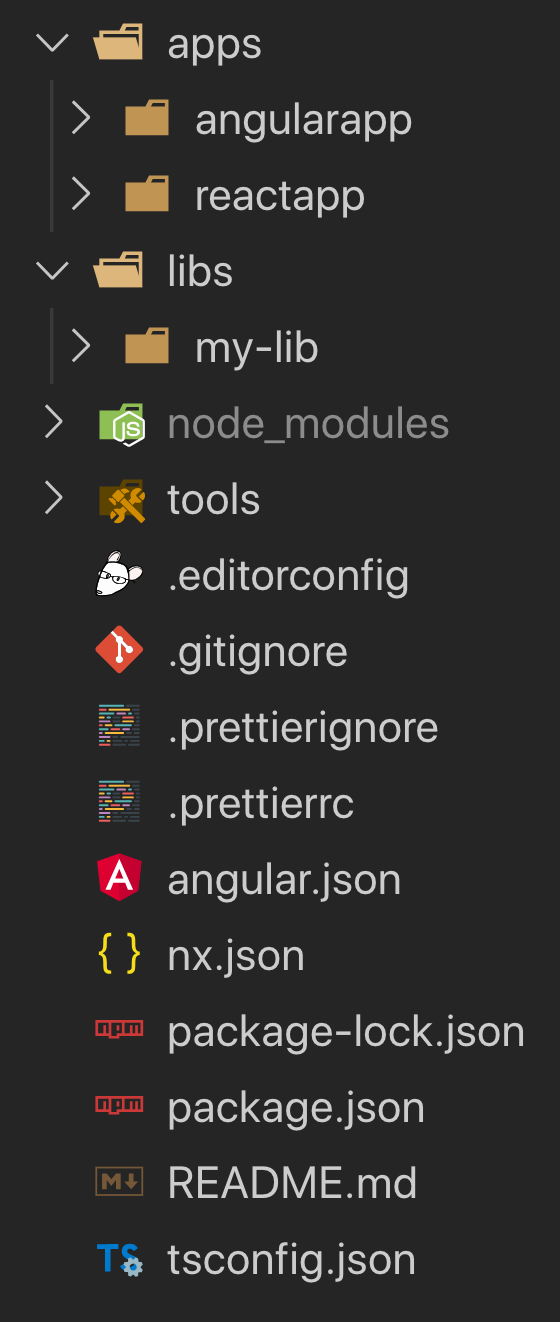What is this?
Angular in my React?


Who We Are
Ryan Chenkie
Brad McAlister


@ryanchenkie

@sonicparke

Companies and developers are narrowing in on the big three



We often think it looks like this



Enterprise Corporation, Inc
We miss AngularJS, LLC
Hipster Startup, LLC
In reality, it looks like this


Foo Corp
Foo Team #2

Foo Corp Acquisition

Another Foo Corp Aquisition

Bar Corp Acquisition

Bar Corp ???

Bar Corp Legacy App
Old Bar Corp Acquisition

Sharing Code Between Apps is Hard
What if we could:
- Use a custom element just like a native HTML element
- Have a "private" DOM
- Share components between apps, regardless of the framework
Web Components

To create a Web Component, we use the Custom Elements API
<my-element></my-element>
What are people saying about Web Components?




Nothing beats the native habitat for a component
But what if we need to share components?
Angular Elements Provide the Best Experience for Authoring Custom Elements

Why Build with Angular Elements?

- Developer experience (Angular APIs, CLI)
- Documentation and content
- Best overall support (community)
How it works
Imagine an ideal world with us.

NASA loves Angular
International Space Station

a.k.a. ISS
VERY IMPORTANT PIECE OF EQUIPMENT

DEMO
AMERICAN
Space Station
INTERNATIONAL
Space Station




The best solution?
A web component made with Angular Elements
Angular Component

Angular Element
to
transforming
ng add @angular/elementsAdd Angular Elements
export class AppModule {
constructor(private injector: Injector) {}
ngDoBootstrap() {
const el = createCustomElement(
TemperatureGaugeComponent,
{ injector: this.injector }
);
customElements.define(
'iss-temperature-gauge',
el
);
}
}Bootstrap
entryComponents: [
TemperatureGaugeComponent
]It's Dynamic
[...]
<body>
<iss-temperature-gauge
unit="fahrenheit"
station-component="discombobulator"
></iss-temperature-gauge>
</body>Replace
<app-root>

ng serve

of course...
We need polyfills.
// Used for browsers with partially native support of Custom Elements
import '@webcomponents/custom-elements/src/native-shim';
// Used for browsers without a native support of Custom Elements
import '@webcomponents/custom-elements/custom-elements.min';npm install @webcomponents/custom-elementspolyfills.ts

if (
) {
}
*Might* need polyfill.
// Used for browsers without a native support of Custom Elements
import '@webcomponents/custom-elements/custom-elements.min';npm install @webcomponents/custom-elementspolyfills.ts

if (
) {
}

if (
) {
}
Differential Loading?
Nope. Roll your own.
DEMO
Distribution


ngx-build-plus
+
Add ngx-build-plus
ng add ngx-build-plus"builder": "ngx-build-plus:browser"Updates Builder
New Flags
--single-bundle --keep-polyfillsUpdate Build Script
"ng build --prod --single-bundle --keep-polyfills"npm run buildBuild




Package with NPM
{
"name": "iss-elements",
"version": "0.0.1"
}
npm run npm-packPack It
Ready for Publishing



My Favourite:
Canadian Space Agency

The CSA uses React for their mission control
They want to share the component with NASA and not need to rebuild it
Consuming the Element in React is Easy
npm install <package><iss-temperature-gauge
unit="celsius"
station-component="discombobulator"
><iss-temperature-gauge/>Inputs work as we'd expect
<iss-temperature-gauge (hiTemp)="...">If we want to listen for an event, it's tempting to do something like this
Listening for Outputs Requires Extra Work
<iss-temperature-gauge ref={...}>class App extends Component {
issTempComponent;
handleRef = refNode => {
this.issTempComponent = refNode;
};
render() {...}
}<iss-temperature-gauge ref={this.handleRef} />class App extends Component {
componentDidMount() {
this.issTempComponent.addEventListener('hiTemp', e => {
this.setState(...)
});
}
componentWillUnmount() {
this.issTempComponent.removeEventListener('hiTemp');
}
...
render() {...}
}this.component.addEventListener('hiTemp', e => {
this.setState({
hasHighTemp: e.detail.alert,
name: e.name,
temperature: e.temperature
})
});
DEMO
Because it's a web component, we can use it many more places than just React
Is this a good idea?
Why it might not be
- Bundle Size
- Ivy isn't here yet...
- If you need to do content projection
- Upgrading from AngularJS
- Framework experience and familiarity
- Ivy is coming
Why it might be
Angular + React
the Easy Way

npx create-nx-workspace my-nx-app --preset=empty
ng g app angularapp --framework=angular
ng g app reactapp --framework=reactng g lib my-lib --framework=none@NgModule({
declarations: [AppComponent],
imports: [BrowserModule],
providers: [],
schemas: [CUSTOM_ELEMENTS_SCHEMA],
bootstrap: [AppComponent]
})
export class AppModule {}
Juri Strumpflohner
Special Thanks

Manfred Steyer

LINKS TO EVERYTHING
bit.ly/ng-de-elements
ryanchenkie.com

ngauthbook.com

Thanks!!
Ryan Chenkie
Brad McAlister
@ryanchenkie

@sonicparke


What is this? Angular in my React?
By Ryan Chenkie
What is this? Angular in my React?
Reusable components are a great idea. That is, until you find yourself working in a React app and you’re unable to reuse the great Angular components you’ve already built. Thankfully, there’s a way around this. If you need to support multiple frontend frameworks, you can harness the power of Angular Elements to do just that and build reusable shared components that will drop right in your app. In this talk, we’ll show you how you can manage components across different frontend frameworks and keep everyone happy.
- 1,470



